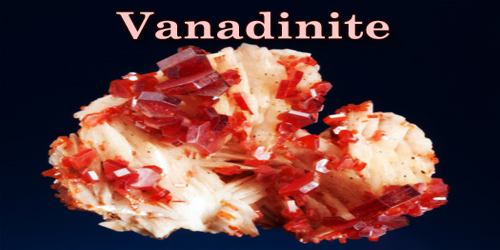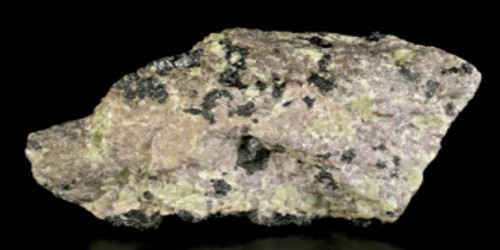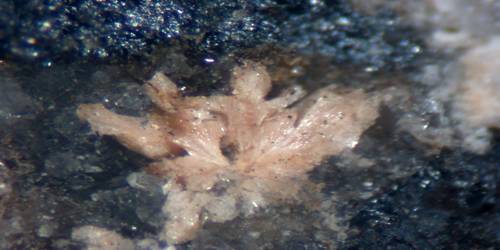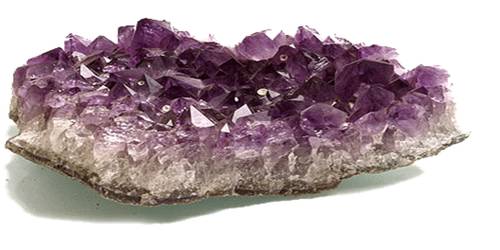Definition –
Vanadinite is a mineral belonging to the apatite group of phosphates, and it has a chemical composition of Pb5(VO4)3Cl. It is an important ore of vanadium and a minor source of lead. A dense, brittle mineral, it is usually found in the form of red hexagonal crystals. It is an uncommon mineral, formed by the oxidation of lead ore deposits such as galena. First discovered in 1801 in Mexico, vanadinite deposits have since been unearthed in South America, Europe, Africa, and North America.
Vanadinite is usually red which the other members of this series and apatite group usually are not. These transparent to translucent stones also occur as orange and occasionally grey and brown. Vanadinite’s classic crystal habit is short hexagonal prisms terminated by a pinacoid, or flat basal face. These crystals are wider than they are long and are more blade-like than the barrel shaped crystals so common to the Apatite Group minerals. The high vitreous to adamantine lustre and generally deep red colour give vanadinite a nice appeal to mineral.
Vanadinite usually forms where lead minerals are oxidized, often in areas with an arid climate. It is not a common mineral, but it is found in small quantities in many parts of the world. It was given its name because of its vanadium content.
The mineral (Vanadinite) was earlier described as a chromate by Andres Manuel del Rio, who discovered it in Mexico in 1801. He called the mineral “brown lead” and asserted that it contained a new element, which he first named pancromium and later, erythronium. However, he was later led to believe that this was not a new element but merely an impure form of chromium. In 1830, the metal vanadium was discovered and vanadinite got its identity. Other names that have since been given to vanadinite are johnstonite and lead vanadate.
Occurrence and Properties of Vanadinite –
Vanadinite occurs as a secondary mineral in the oxidized zone of lead-bearing deposits, the vanadium is leached from wall-rock silicates. Associated minerals include mimetite, pyromorphite, descloizite, mottramite, wulfenite, cerussite, anglesite, calcite, barite, and various iron oxide minerals.
The vanadium and chlorine are usually leached from the overburden by downward-moving waters. Vanadinite deposits are usually found in arid regions, with notable deposits in Argentina, Australia, Morocco, Namibia, and the southwestern United States.
Vanadinite deposits are found in over 400 mines across the world. Notable vanadinite mines include those at Mibladen and Touisset in Morocco; Tsumeb, Namibia; Cordoba, Argentina; and Sierra County, New Mexico, and Gila County, Arizona, in the United States.

Composition and Solid Solution: Vanadinite is a lead chlorovanadate with the chemical formula Pb5(VO4)3Cl. It is composed (by weight) of 73.15% lead, 10.79% vanadium, 13.56% oxygen, and 2.50% chlorine. Each structural unit of vanadinite contains a chlorine ion surrounded by six divalent lead ions at the corners of a regular octahedron, with one of the lead ions provided by an adjoining vanadinite molecule. The distance between each lead and chlorine ion is 317 picometres. The shortest distance between each lead ion is 4.48 Å. The octahedron shares two of its opposite faces with that of neighboring vanadinite units, forming a continuous chain of octahedrons. Each vanadium atom is surrounded by four oxygen atoms at the corners of an irregular tetrahedron. The distance between each oxygen and vanadium atom is either 1.72 or 1.76 Å. Three oxygen tetrahedrons adjoin each of the lead octahedrons along the chain.
A solid solution series exists between vanadinite and mimetite Pb5(AsO4)3Cl. Small amounts of calcium, zinc, and copper can substitute for lead. A unit cell of vanadinite, the smallest divisible unit that possesses the same symmetry and properties, is in the form of a hexagonal prism. The unit cell of vanadinite is composed of two of its molecules and has the dimensions a = 10.331 Å and c = 7.343 Å), where a is the length of each side of the hexagon and c is the height of the prism. The volume of each unit cell of vanadinite, given by the formula V = a2c sin(60°), is 678.72 Å3.
Vanadinite belongs to the Apatite group and is part of the Pyromorphite and Mimetite series. It’s a lead chlorovanadate that can usually be found in the oxidation area of lead deposits in dry climates. Its deep and striking red color, as well as its high luster and attractive hexagonal prism crystals, make Vanadinite a sought after and highly collectable crystal. It’s a mixture of a number of different minerals, including Vanadium, for which it was named. It also usually contains chlorine, oxygen, and lead. It often occurs as brightly colored crystals that are usually short, tabular hexagonal prisms with a resinous to adamantine luster. It is most often bright yellow, orange, red or brown in color. It can also occur in globular forms and incrustations on other minerals.
As an ore of lead, vanadinite has a high specific gravity (6.6 to 7.2) and a low hardness (3 to 4 on the Mohs hardness scale). It has a pale yellow to yellowish brown streak and is brittle, easily breaking with an uneven or conchoidal fracture. The crystals can be transparent, translucent or opaque.
Uses and Benefits of Vanadinite –
Vanadinite is usually bright-red or orange-red in colour, although sometimes brown, red-brown, grey, yellow, or colourless. Its distinctive colour makes it popular among mineral collectors. Its streak can be either pale yellow or brownish-yellow. Vanadinite may be transparent, translucent or opaque, and its lustre can range from resinous to adamantine. Vanadinite is anisotropic, meaning that some of its properties differ when measured along different axes. When measured perpendicular and parallel to its axis of anisotropy, its refractive indices are 2.350 and 2.416 respectively. This gives it a birefringence of 0.066.
Vanadinite, along with carnotite and roscoelite, are important ores of vanadium metal. Vanadinite is also a minor ore of lead. Both vanadium and lead are produced wherever vanadinite is mined. Vanadinite is very popular as a specimen with mineral collectors. They enjoy its bright colors, showy hexagonal crystals, resinous color, and adamantine luster.
Vanadinite is powerfully connected to our earth chakra. This piece of crystal possesses strong vibrations that will help people accept their own physicality. It is an excellent crystal if people are someone who usually spends long hours at work. It will give them that boost of energy and that extra lift in their spirits to keep them going.
Vanadinite helps in times of meditation, it helps shut down those thoughts that people just can’t stop running around in their head. It also can be used to guide their awareness to consciously search of psychic visions and journeys. Vanadinite opens an internal channel within the body to receive universal energy. This energy then aligns the chakras and then flows through the body.
Information Sources:
















